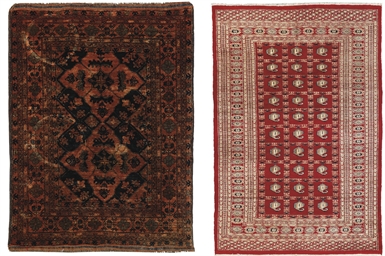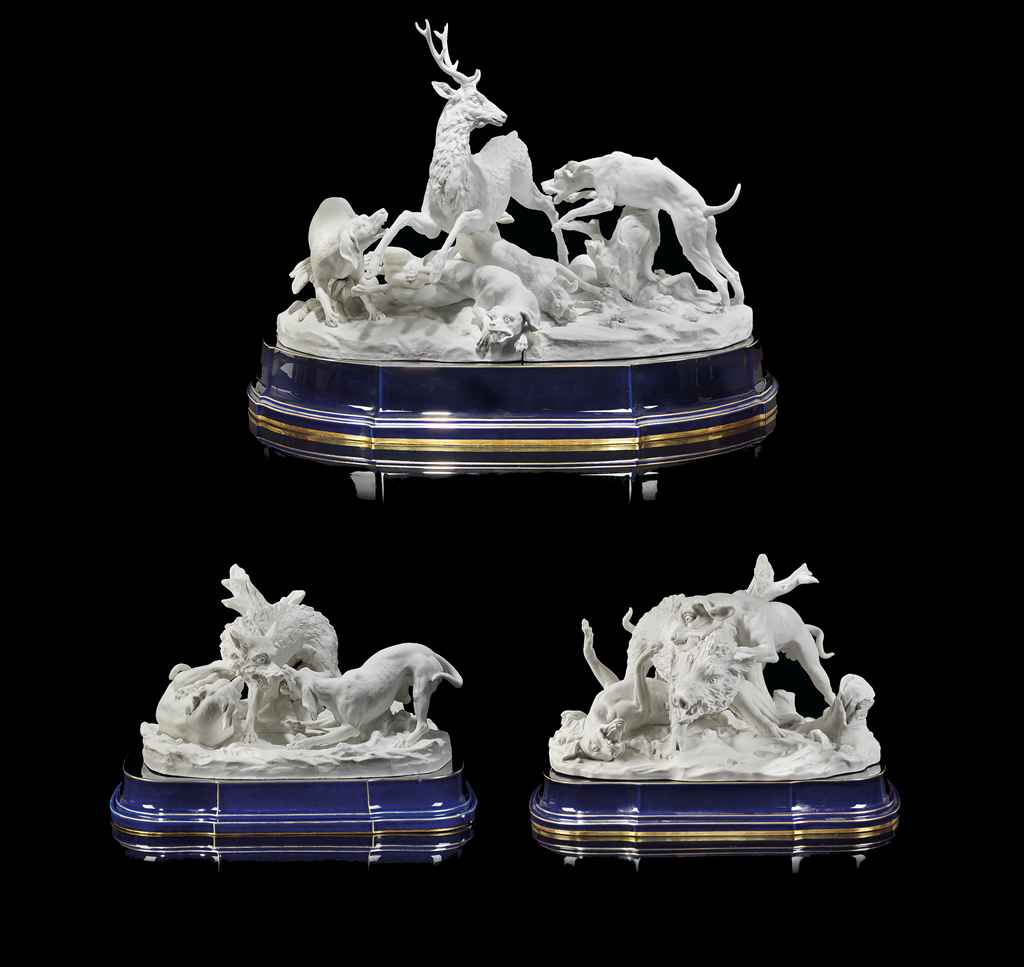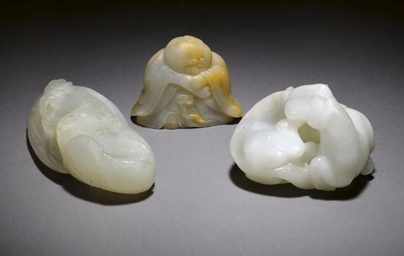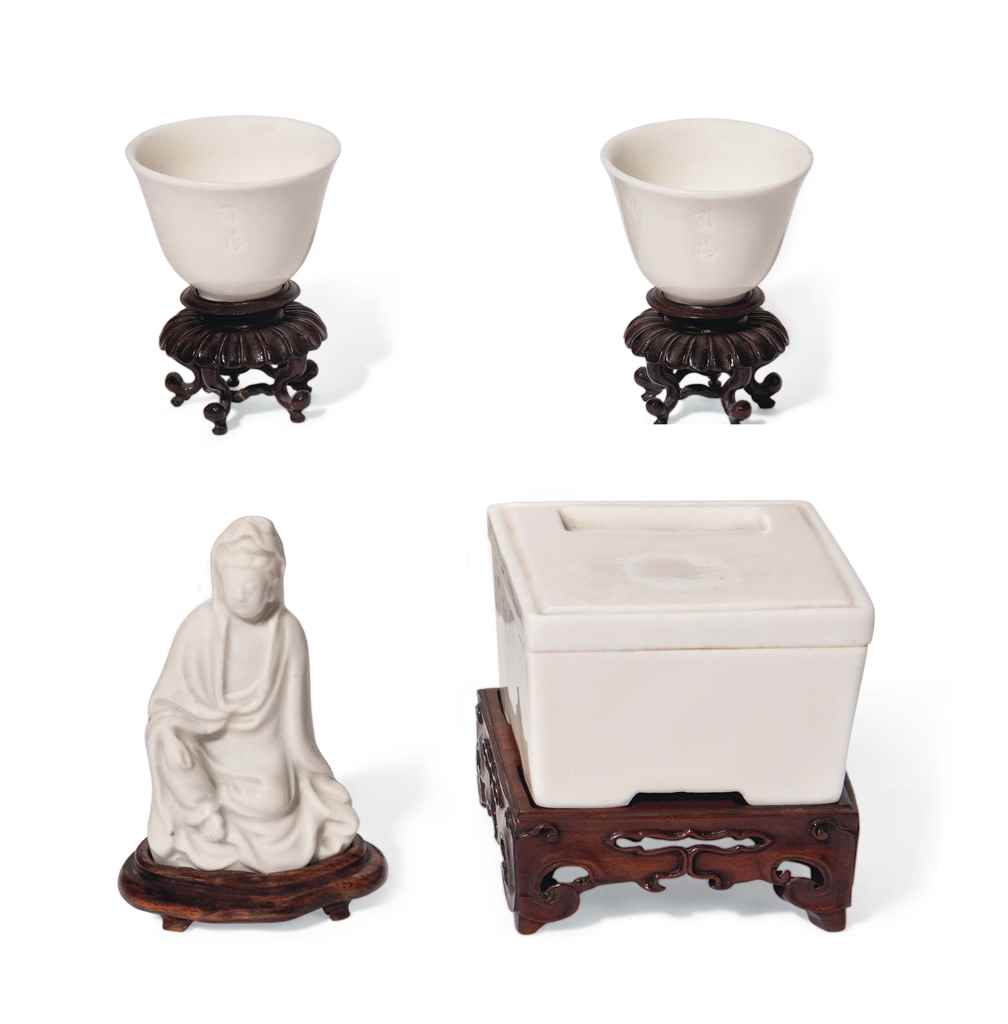A group of three Mughal gilt glass perfume bottles
Gujarat, 18th centuryeach of rectangular form with domed shoulder tapering to a short cylindrical neck, decorated in gilt with floral motifs contained within borders to the body, the shoulder with vegetal motifs, each with diagonal seam under the square base and glass stopper with gilt dome and knop finial
the tallest 5.3 cm. high(3)FootnotesThe rectangular form of the current lot is highly evocative of 'case bottles,' a taller type of 18th Century Indian glass vessel. The name refers to the similarity of this form to a type of Dutch and German glass bottle from the late seventeenth century made specifically to stack inside the compartments in a case or box.
These case bottles were generally associated with 18th Century Gujarat and Kutch where a number of glass factories were established, including the factories of the Dutch East India Company and the influential craftsman Ram Singh Malam who visited the Netherlands to learn glassmaking.
Case bottles were distinguished by the fact that they were blown in a two-part mold, i.e. as two triangular halves that were fused together diagonally, the corners painted over to cover up the joint. The only visible seam in an archetypical case bottle would be a diagonal line under the base, a feature present in the current lot (Stefano Carboni, Glass from Islamic Lands: The Al-Sabah Collection, Kuwait National Museum, London: Thames & Hudson, 2001, p.389).
For a set of six taller Mughal 'case bottles' with similar gilt decoration and dome and knop finial, ascribed to 18th Century Gujarat, see Christie's, Art of the Islamic and Indian Worlds, 7 October 2008, lot 230. For an enamelled 18th Century Mughal perfume bottle of similar form to the present lot, see Christie's, Arts & Textiles of the Islamic & Indian Worlds, 11 October 2013, lot 594.
A group of three Mughal gilt glass perfume bottles
Gujarat, 18th centuryeach of rectangular form with domed shoulder tapering to a short cylindrical neck, decorated in gilt with floral motifs contained within borders to the body, the shoulder with vegetal motifs, each with diagonal seam under the square base and glass stopper with gilt dome and knop finial
the tallest 5.3 cm. high(3)FootnotesThe rectangular form of the current lot is highly evocative of 'case bottles,' a taller type of 18th Century Indian glass vessel. The name refers to the similarity of this form to a type of Dutch and German glass bottle from the late seventeenth century made specifically to stack inside the compartments in a case or box.
These case bottles were generally associated with 18th Century Gujarat and Kutch where a number of glass factories were established, including the factories of the Dutch East India Company and the influential craftsman Ram Singh Malam who visited the Netherlands to learn glassmaking.
Case bottles were distinguished by the fact that they were blown in a two-part mold, i.e. as two triangular halves that were fused together diagonally, the corners painted over to cover up the joint. The only visible seam in an archetypical case bottle would be a diagonal line under the base, a feature present in the current lot (Stefano Carboni, Glass from Islamic Lands: The Al-Sabah Collection, Kuwait National Museum, London: Thames & Hudson, 2001, p.389).
For a set of six taller Mughal 'case bottles' with similar gilt decoration and dome and knop finial, ascribed to 18th Century Gujarat, see Christie's, Art of the Islamic and Indian Worlds, 7 October 2008, lot 230. For an enamelled 18th Century Mughal perfume bottle of similar form to the present lot, see Christie's, Arts & Textiles of the Islamic & Indian Worlds, 11 October 2013, lot 594.








.jpg)



.jpg)

.jpg)
Try LotSearch and its premium features for 7 days - without any costs!
Be notified automatically about new items in upcoming auctions.
Create an alert